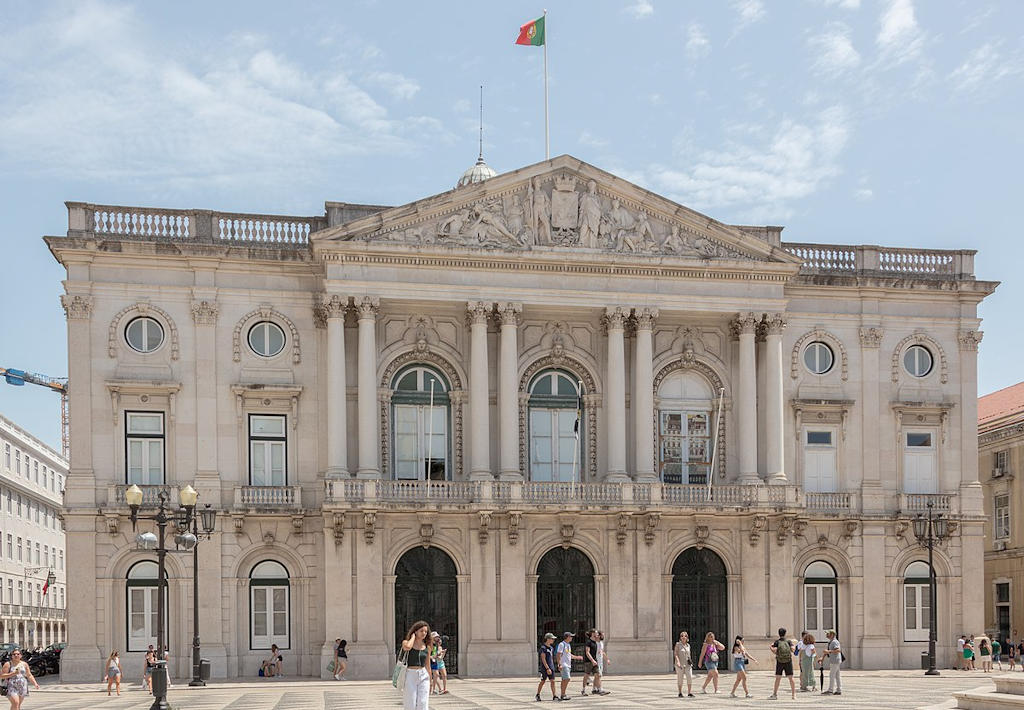Key Characteristics of Neoclassical Art and Architecture:
- Symmetry and Balance: Neoclassical works strive for symmetry and balance, drawing inspiration from the classical architecture of ancient Greece and Rome. Structures are often designed with equal proportions and mirrored elements, creating a sense of order and harmony.
- Classical Motifs and Forms: Neoclassical art and architecture incorporate classical motifs, such as columns, pediments, and friezes, derived from ancient Greek and Roman designs. These elements are used to evoke a sense of grandeur and timelessness, showcasing the influence of classical aesthetics.
- Clarity and Rationality: Neoclassical artists sought to emphasize clarity and rationality in their works. They aimed for clear compositions, precise lines, and well-defined forms, rejecting the ornate decoration of the preceding Rococo period. Neoclassical artworks often depicted historical or mythological narratives, reflecting the desire to elevate noble ideals and virtues.
- Use of Classical Orders: Neoclassical architecture employs the classical orders, including Doric, Ionic, and Corinthian, as design principles. These orders dictate the proportions and decorative elements of columns, further enhancing the sense of classical authenticity in Neoclassical structures.
- Emphasis on Simplicity and Functionality: Neoclassical artists and architects valued simplicity and functionality. Buildings were designed with a focus on practicality, eschewing unnecessary ornamentation. This emphasis on simplicity aligned with the ideals of the Enlightenment era, which championed reason and rationality.
Notable Artists of the Neoclassical Period:
- Jacques-Louis David (1748-1825): Jacques-Louis David, a prominent French painter, played a pivotal role in the development of Neoclassical art. His paintings, such as "The Oath of the Horatii" and "The Death of Socrates," embody the Neoclassical style, showcasing clean lines, clear compositions, and themes drawn from classical history and mythology.
- Antonio Canova (1757-1822): Antonio Canova, an Italian sculptor, is renowned for his Neoclassical sculptures that exhibit a harmonious blend of classical inspiration and refined elegance. His marble works, such as "Psyche Revived by Cupid's Kiss" and "Napoleon as Mars the Peacemaker," reflect the idealized beauty and grace of classical sculpture.
- Étienne-Louis Boullée (1728-1799): Étienne-Louis Boullée, a French architect, is known for his visionary Neoclassical designs that pushed the boundaries of architectural imagination. His influential works, although mostly unbuilt, proposed monumental structures characterized by geometric forms, simplicity, and a play of light and shadow.
- Karl Friedrich Schinkel (1781-1841): Karl Friedrich Schinkel, a Prussian architect and painter, left a significant impact on Neoclassical architecture in Germany. His designs, including the Altes Museum in Berlin and the Schauspielhaus in Berlin, exemplify the elegance, symmetry, and classical influences of the Neoclassical style.
Lisbon.vip Recommends
Notable Examples of Rococo Art and Architecture in Lisbon:
- Ajuda National Palace: The Ajuda National Palace, located in Lisbon, is a prominent Neoclassical structure. Construction began in the late 18th century, but the palace was only completed in the 19th century. It served as the royal residence and exhibits a blend of Neoclassical and Baroque architectural elements. The facade features grand columns, pediments, and elegant proportions.
- Lisbon City Hall: The Lisbon City Hall, also known as Paços do Concelho, is an impressive Neoclassical building located in the heart of Lisbon. Designed by architect Domingos Parente da Silva in the 19th century, it features a symmetrical facade with a central clock tower. The building's exterior showcases the characteristic elegance and balance of Neoclassical design.
- Estrela Basilica: The Estrela Basilica, situated in Lisbon, is a notable Neoclassical church. Built in the late 18th century, it was inspired by the Pantheon in Rome. The basilica's facade exhibits classical elements, including Ionic columns, pediments, and a central dome. The interior features a nave adorned with intricate detailing and beautiful frescoes.
- Palace of Queluz: While technically located in the municipality of Queluz, just outside Lisbon, the Palace of Queluz (Palácio de Queluz) is worth mentioning due to its close proximity to the city. The palace is a significant example of Neoclassical architecture in Portugal. Constructed in the 18th century, it combines Neoclassical and Rococo styles, showcasing elegant facades, symmetrically arranged windows, and refined ornamentation.
Enduring Influence and Legacy:
The Neoclassical movement left a lasting impact on art, architecture, and design. Its emphasis on classical beauty, rationality, and order resonated with the ideals of the Enlightenment era and continued to shape artistic trends in the 19th century and beyond. Neoclassical architecture influenced public buildings, such as government structures, museums, and libraries, as well as residential mansions and city planning. Neoclassical art and architecture served as a bridge between the grandeur of the past and the evolving modern world, inspiring subsequent architectural movements and reinforcing the enduring appeal of classical aesthetics.Neoclassicism stands as a testament to the timeless beauty and rationality of classical antiquity. Through its emphasis on symmetry, classical motifs, and rational design principles, Neoclassical art and architecture revived the spirit of ancient Greece and Rome. The works of notable Neoclassical artists and architects continue to captivate audiences, reminding us of the enduring legacy and influence of this significant artistic movement.



